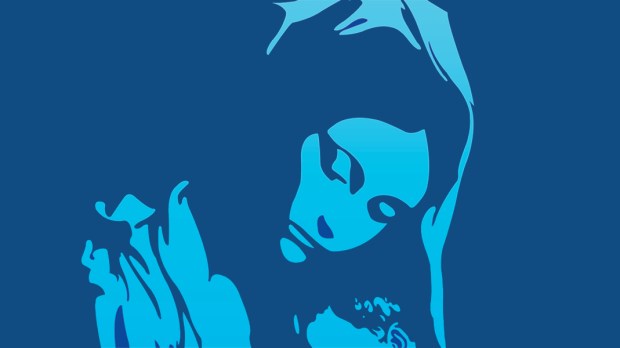It’s the color of the Virgin’s cloak, the hue of the ceiling of heaven. And according to the design trendsetters at the Pantone Color Institute, Classic Blue is the reassuring color we need on the threshold of an anxious decade.
Pantone, the company that sets printing and digital standards for the colors we see all around us, has chosen a Color of the Year every year since 2000. Some have been jazzy or startling, like last year’s Living Coral, but the folks at Pantone went with a simpler choice this year.
“When we look at the world around us, we know that we’re living with a lot of unrest, where some days we don’t feel quite as secure,” said Leatrice Eiseman, executive director of the Pantone Color Institute, in an Architectural Digest piece by Anna Fixen. “Blue, from an emotional, psychological standpoint, has always represented a certain amount of calm and dependability. It’s a color that you can rely on.”
The color of heaven
We’ll be seeing a lot of this Classic Blue shade in the coming months, in everything from shoes to wall paint to accent pillows to the graphics used in print and TV ads. And part of why the color is expected to have such a steadying effect is its pure familiarity.
The blue of an evening sky is one of the first colors humans see. But reproducing that calm, uplifting blueness wasn’t always easy for painters and cloth dyers. There aren’t many natural sources for inks. The Egyptians were the first to create a bluish color, much lighter and a little yellower than 2020’s Classic Blue (which is made up of various percentages of red, green, and blue).
The first true blue pigment developed for painters was not available until the time of Fra Angelico, who made this color his own in breathtaking heavenly scenes accented with pure gold. “Fra Angelico blue,” as it came to be known, was also called ultramarine (“beyond the sea”). It was made by grinding a rare blue stone known as lapis lazuli, mined only in Afghanistan, into a powder mixed with fixatives.
Lapis lazuli (Latin for “the stone of Lazuli,” where it was found) gave its name to the color blue in the Romance languages (azul in Spanish, azur in French) and to the azure color of the sky.
The Queen’s mantle
In Western Christian art, the blue of heaven became associated with the mantle of the Queen of Heaven. Wrapping Our Lady in the rare blue pigment became an artist’s way of paying homage, and an art patron or church’s way of sparing no expense in its devotion.
Even as Renaissance artists moved beyond religious imagery, notes of this rich, embracing color continued to appear, calling up fairytale scenes, cozy interiors, and the deep peace that even today’s color experts see in Classic Blue.
Keep your eyes open for Classic Blue this year.

